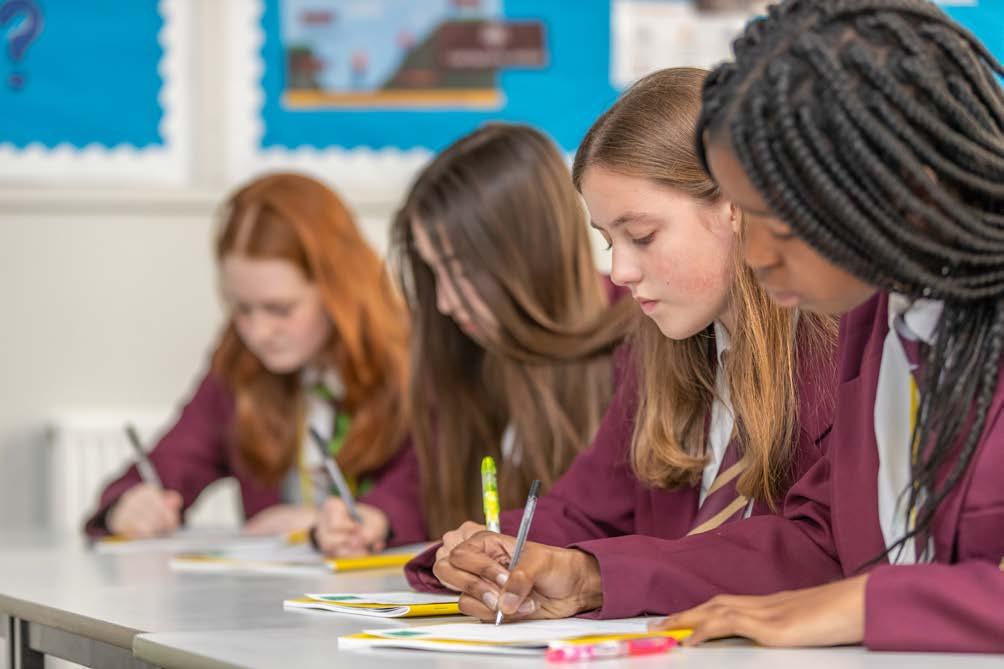
3 minute read
Vocabulary, Multiple Choice Questions (MCQs) and Interleaving
The power of an expansive and diverse vocabulary is huge and students’ possession of a strong vocabulary unlocks vast opportunities; Hirsh (2017, p 48) describes vocabulary size as ‘the single most reliable correlate to reading ability’. The more confident our students are at reading, the more easily they can access learning and develop higher level responses. Developing vocabulary is a key part of imparting knowledge and students need certain words to become the critical thinkers and problem solvers we are aiming to develop. As such we identify Tier 2 and Tier 3 words in our curriculum that students should know and teachers build opportunities to develop and embed these words into their teaching. Therefore, they are part of our assessments.
Where written tests form part of our assessments, Multiple Choice Questions (MCQs) are incorporated. There are several reasons for this:
• When carefully written, they can expose key misconceptions that need to be addressed. This means the ‘distractors’ (the incorrect answers students have to avoid in order to get the right answer) have to be written in such a way that identifies what their misconception is if they have not arrived at the correct answer.
• Students find them encouraging
• They are high-impact, low-workload for teachers • They guide precise next-steps to inform planning to close gaps in knowledge
• They can be used in all subjects
Short-answer and multiple-choice questions allow students to be assessed in a beneficial way on the knowledge, skills and understanding that will allow them to then achieve well on extended writing tasks or problem-solving tasks. Christodoulou is clear that multiple-choice questions ‘are capable of testing higher-order skills’ (Christodoulou, 2014, p. 23) and suggests they could ‘improve both exam reliability and classroom assessment’ (ibid.).
Hirsh recommends a mixture of both multiplechoice questions and a writing task to assess writing (Hirsch, 1988, cited in Christodoulou, 2014, p. 23). This exploits the best of both formats; multiple-choice questions which assess knowledge and understanding and then a writing task to apply this. This is supported by Buckles and Siegfried who researched the use of multiple-choice questions in assessing the skill levels of Bloom’s taxonomy and ‘contend that multiple-choice questions can be used to test student achievement up [to] Bloom’s level four - analysis’ (Buckles and Siegfried, 2006, p. 50), suggesting that multiple-choice questions can assess analysis and application as well as knowledge and comprehension. Extended written responses or complex problems are then needed to assess synthesis and evaluation skills.
Wiliam agrees; ‘with short answer questions, it is possible to ask a lot of questions in a given amount of testing time. This means that it is unlikely that a student’s total score is strongly influenced by the actual choices of items included in the test’ (Wiliam, 2014, p. 21). As such, multiple-choice questions and shortanswer questions can mitigate against some of the issues around assessment design such as how the content is sampled.
Within lessons, ‘hinge questions’ that are well-designed can identify misconceptions in a timely manner and increase the impact of lesson time if they are carried out before students complete work independently.
Rohrer’s research appears to show that interleaving content ‘typically improves final test scores’ (Rohrer, 2012, p. 357). With this in mind we ensure that previously-learned topics are interleaved into our curriculum and so we also include questions which test knowledge, skills and understanding from previous cycles in our assessments.
Retrieval practice also plays a critical role in moving knowledge into the long-term memory: ‘storage strength is increased both by restudying an item or by successfully retrieving it from memory, but that retrieval has a bigger impact on storage strength than restudy’ (Wiliam, 2020, p. 187). This is known as the ‘testing’ effect and can be used as part of day-to-day lessons but it is also important to give students opportunities to recall previous learning so that they have a greater chance of storing it in their long-term memory.



